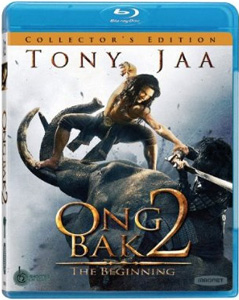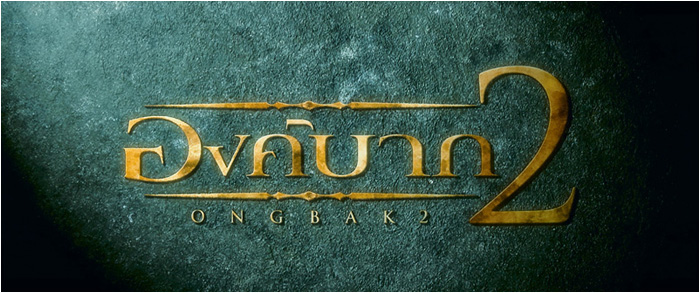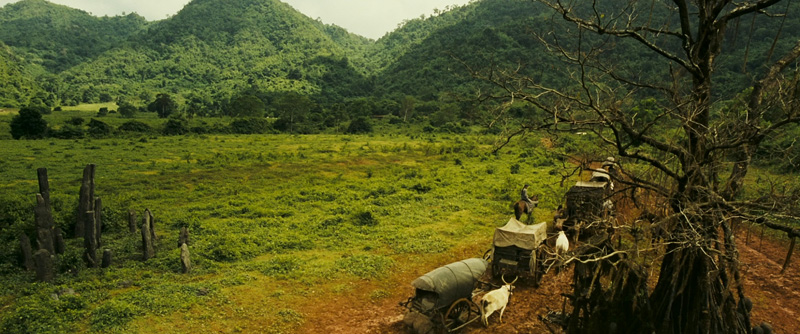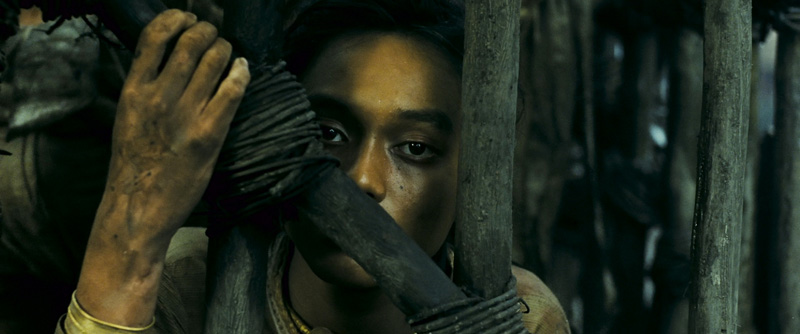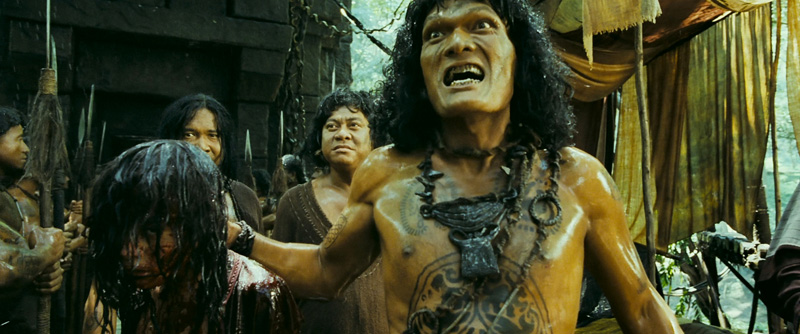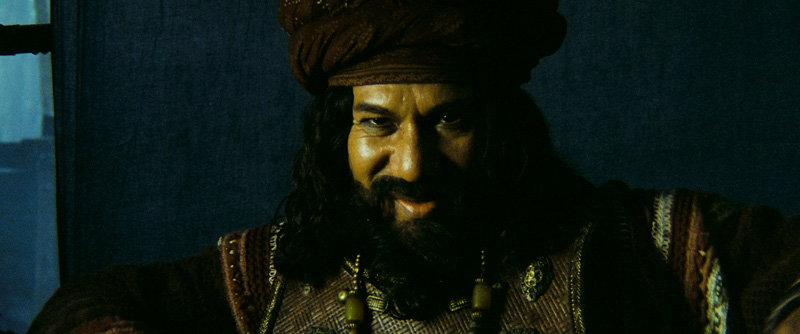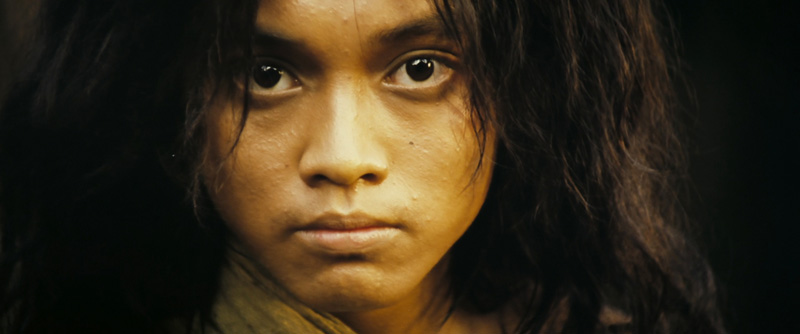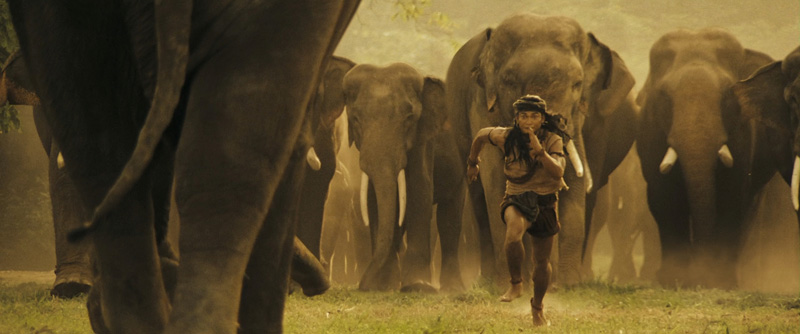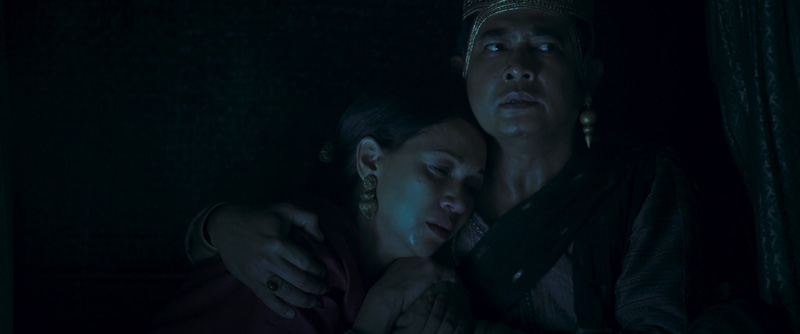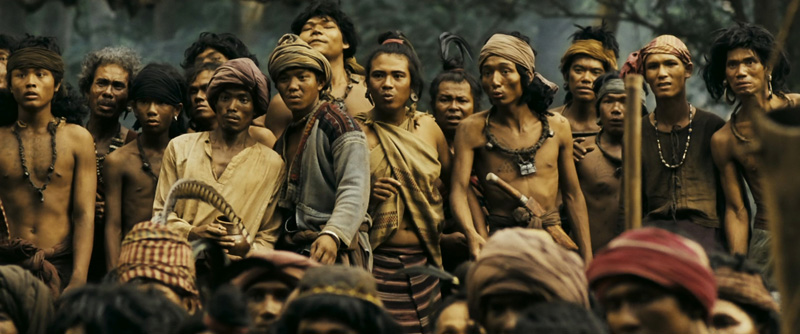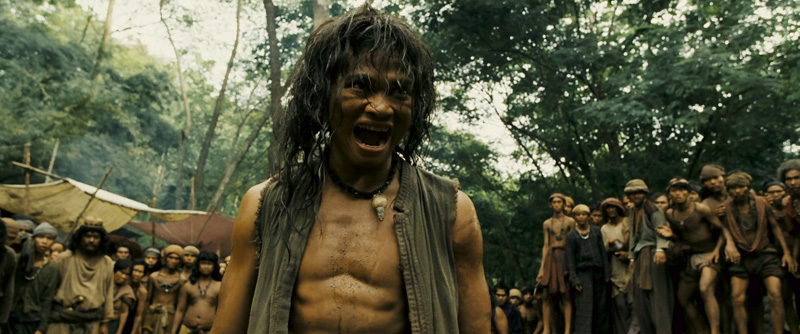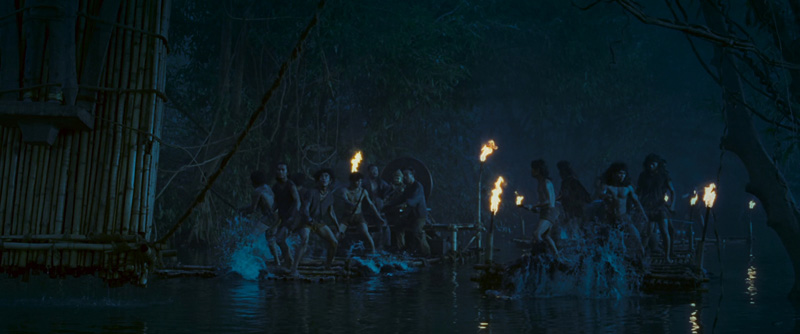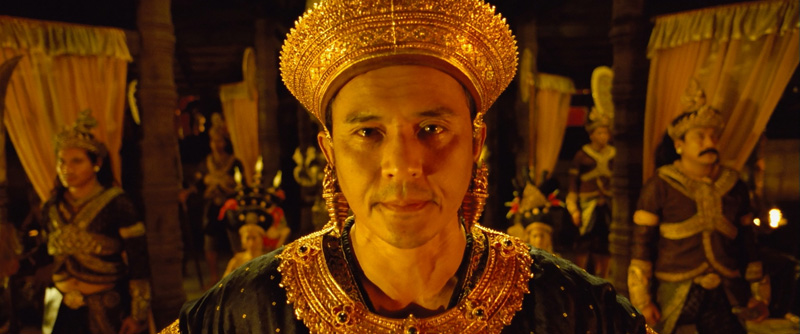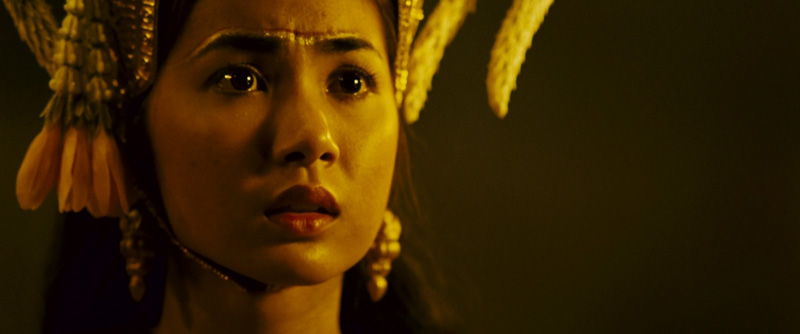Review by Leonard Norwitz
Studio:
Theatrical: Iyara Film
Blu-ray: Magnolia Home Entertainment
Disc:
Region: FREE!
(as verified by the
Momitsu region FREE Blu-ray player)
Runtime: 1:37:50.364
Disc Size: 48,906,802,184 bytes
Feature Size: 22,618,146,816 bytes
Video Bitrate: 23.96 Mbps
Chapters: 13
Case: Standard Blu-ray case
Release date: February 2nd, 2010
Video:
Aspect ratio: 2.35:1
Resolution: 1080p / 23.976 fps
Video codec: VC-1 Video
Audio:
DTS-HD Master Audio English 2356 kbps 5.1 / 48 kHz / 2356
kbps / 16-bit (DTS Core: 5.1 / 48 kHz / 1509 kbps / 16-bit)
DTS-HD Master Audio Thai 2657 kbps 5.1 / 48 kHz / 2657 kbps
/ 24-bit (DTS Core: 5.1 / 48 kHz / 1509 kbps / 24-bit)
Subtitles:
English (SDH), English, Spanish,
none
Extras:
• Alternate Unrated Cut
• 3 Making-of Featurettes – in SD (21:00)
• 3 Behind-the-Scenes Featurettes - in SD (17:45)
• 8 Interviews with Cast & Filmmakers – in SD (25:20)
• Ong Bak 3 Exclusive Footage
• HDNet: A Look at Ong Bak 2
The Film:
4
Perhaps you are unacquainted with Ong Bak, the 2003 Thai
martial arts film that brought almost instant international
fame to its star, Panom Yeerum (now known as Tony Jaa),
known for his wire-free, CG-free, stunt double-free work.
Tony Jaa's stuntwork was electrifying. It had a certain raw
energy, combined with acrobatic skill that announced a kind
of Jackie Chan/Bruce Lee. That film was set in both village
and city of more or less contemporary Thailand. A second
movie titled Tom yum goong (or, simply, Ong Bak 2, or more
oddly, The Protector) also features Tony Jaa in his efforts
to retrieve a stolen sacred baby elephant. Lots of Muay
Thai. Not so much plot or character. And now we have another
Ong Bak 2 (aka Ong Bak 2 – The Beginning) that has nothing
to do with either of the previous films since it does not
propose to be a prequel to either of those movies or their
heroic protagonists, but evidently the first of a series of
movies with a new character set in centuries old Thailand.
The plot harkens back to more movies I care to count from
any number of cultures: Young boy is orphaned after his
parents are murdered, he's raised by outlaws, and eventually
confronts those who killed his parents. That's about it. One
difference: there's scarcely any room for romance in this
tale of unrequited revenge. There is a girl/boy childhood
friendship that doesn't quite sort itself out as adults. The
thing reeks of sequel. More than that, the movie is so
episodic as to wonder if there isn't another half hour or
more somewhere waiting to surface. (The "Alternate Unrated"
cut, being shorter, doesn't address this shortcoming.)
Jaa's Tien is raised in comparative luxury until his
blueblood parents are killed by traitors. Once he is trained
by the outlaws and grows up to take on their leadership (a
good third of the movie that also brings in his conquest of
elephants), he is ready to confront his past (much of which
is told in a long flashback) and his destiny: to seek out
and kill the man who killed his parents, who now poised to
unite the country in a dictatorship. But things don't come
off nearly as planned. Thus, the sequel.
Tony Jaa and his movie make for comparison to the popular
Indian actor from the 1940s and 1950s, Sabu, and Zoltan
Korda's Jungle Book in particular. Sabu, though as spirited
as Jaa, is soulful, romantic, vulnerable. His Mowgli is
interested in others, and he's courageous, but he is
distracted by vengeance and a fear of those who look like
him but aren't. Mowgli possesses not nearly the same means
to accomplish his aims as Tien, which makes his adventure
that much more accessible to the imagination. He needs only
to level the playing field with a "tooth" of proper
proportion and power. Such subtlety does not lend itself to
a story as preoccupied by cruelty and numbers as Ong Bak 2.
Tony Jaa is not nearly as pretty as Sabu, and Tien has no
sense of humor whatsoever. He does possess much the same
degree of determination and is perfectly willing to risk
death to carry out his vengeance, and even displays a
certain degree of style as he goes about it.
The Jungle Book, of course, is meant for a younger and more
innocent audience. It is, in part, that very innocence which
makes both the Kipling story and its incarnation by Sabu and
Korda the stuff of timeless legend. Ong Bak 2 clearly
intends to be epic but is targeted for adults who require
their action violent and rageful. There is little room for
meditation, though there is a scene when Tien lets his blood
mix with water that intends just that, but which doesn't
come off. Curiously, the best scene in Ong Bak 2 comes at
the end in a moment of revelation, regret and penance – and,
best of all, that moment does not belong to Tien.
Try as it might, Ong Bak 2 fails to stay with us once the
curtain falls. This was less true of the first Ong Bak,
which had a raw energy where this movie has only gruesome
intensity. Ong Bak 2 has more than its share of kick-ass
action sequences, but few, if any, are as interestingly
choreographed or filmed as, for example, any number of duels
in Yip Wai-Shun's Flash Point or Wilson Yip's SPL, to say
nothing of the first Ong Bak. Disappointing, too, is the
sequence that features Thai classical dancing, which isn't
nearly as interestingly designed, staged or photographed as
Jerome Robbins' "Uncle Tom's Cabin" from The King and I.
Image:
9/9
NOTE:
The below
Blu-ray
captures were taken directly from the
Blu-ray
disc.
The first number indicates a relative level of excellence
compared to other Blu-ray video discs on a ten-point scale.
The second number places this image along the full range of
DVD and Blu-ray discs.
The movie may have little to offer in the way of structure,
plot or character, but Magnolia provides a strong image with
few, if any transfer issues. I found no defects in the
source print, nor edge enhancement or DNR. The image is not
razor sharp, but doesn't really suffer as a result. Color is
saturated. Blacks are solid with adequate shadow
information. Highlights blow out some, but that's most
likely a consequence of how the movie was shot, as is the
pervasive yellow-green color cast.
CLICK EACH
BLU-RAY
CAPTURE TO SEE ALL IMAGES IN FULL 1920X1080 RESOLUTION
Audio & Music:
6/5
Dialogue, such as it is, is clear enough and reasonably well
located. There are numerous isolated locational cues during
the action sequences, but panning is hit and miss. For
example when young Tien is chased on horseback at the
beginning of the film, there is opportunity missed for
arrows to whistle from back to front, but they don't. The
music, for the most part, strikes me as stock action
material, easily interchangeable with any number of other
low-budget martial arts movies. There are a few moments of
relevance or beauty, but by and large, unimaginative.
However my biggest gripe is the lack of distinction of one
body blow from another. The effect is that it dulls the
sense and the power Jaa and Panna Rittikrai are going for.
If every blow sounds the same I get bored quickly.
Operations:
6
Let's go right to the subtitles and English translation. One
doesn't have to understand Thai to see that the translation
was in need of some serious tweaking. Spelling errors are
few, but the sense of much of the dialogue makes everyone
seem duller than they must have been. After one particularly
grueling scene where Tien puts down half an army of slave
traders, a tearful mother, finally reunited with her child,
says "You saved my life. Thank you so much." This sort of
sloshing about from style to style makes this movie seem
stupider than it probably is. In fact the movie is more
successful when there was little if any dialogue – the first
fifteen minutes has no conversation to speak of - the action
speaks well enough for itself. I should mention that there
is an English language dub that I didn't check out. Menu
operations are readily accessible with extensive bonus
features laid out neatly and usefully.
E
xtras:
6
The Behind the Scenes featurettes are shown without anyone
addressing us and therefore it is sensible that subtitles
are not included. The segments are divided into three areas
of filming: Capturing a Warrior, The Kingdom and The
Community. The three Making-of featurettes: Story &
Character of an Epic, Revealing the Majesty, and The Art of
War take on the usual aspects of production, and are
subtitled. (Do you ever get the impression that the titles
for these segments are all the work of a single person? I
wonder how much he gets paid?) The interviews with cast and
crew are also subtitled. I like that each person introduces
him or herself so that we can hear how they say their names.
Thai is a fascinating aural experience that has always
struck me as a tape recording played backwards. I don't mean
this in any pejorative way. Some languages are so remote to
my ear that they have a special ring to them. Thai and
Finnish are two that come quickly to mind. The Ong Bak 3
Exclusive Footage is not quite ready for trailer status. All
of the extra features are presented in standard definition
of varying quality and aspect ratios.
|
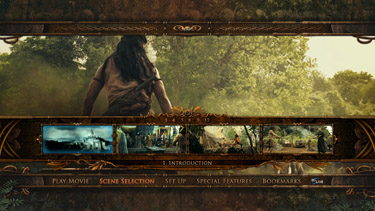 |
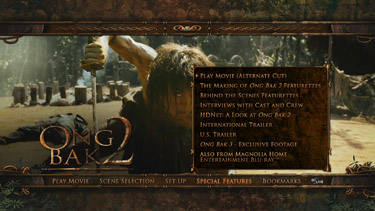 |
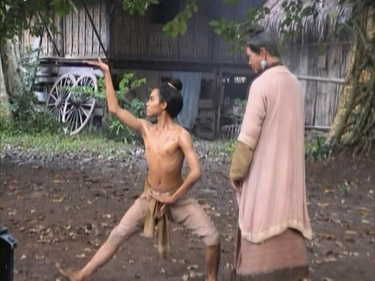 |
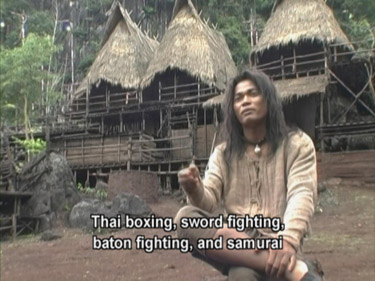 |
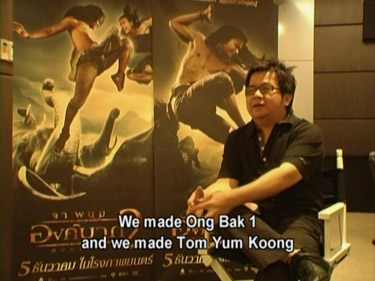 |
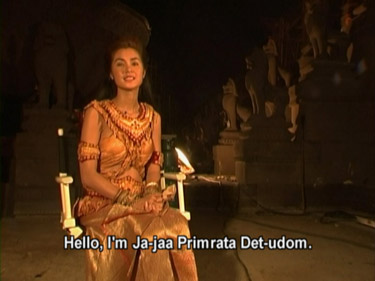 |
Bottom line:
5
The image is quite good and the audio adequate, even if the
body blows aren't properly undistinguished.
"Undistinguished" pretty much sums up the movie in general.
For Tony Jaa and Muay Thai fans only.
Leonard Norwitz
February 1st, 2010
![]()
![]()

![]()
![]()
![]()
![]()

![]()
![]()

